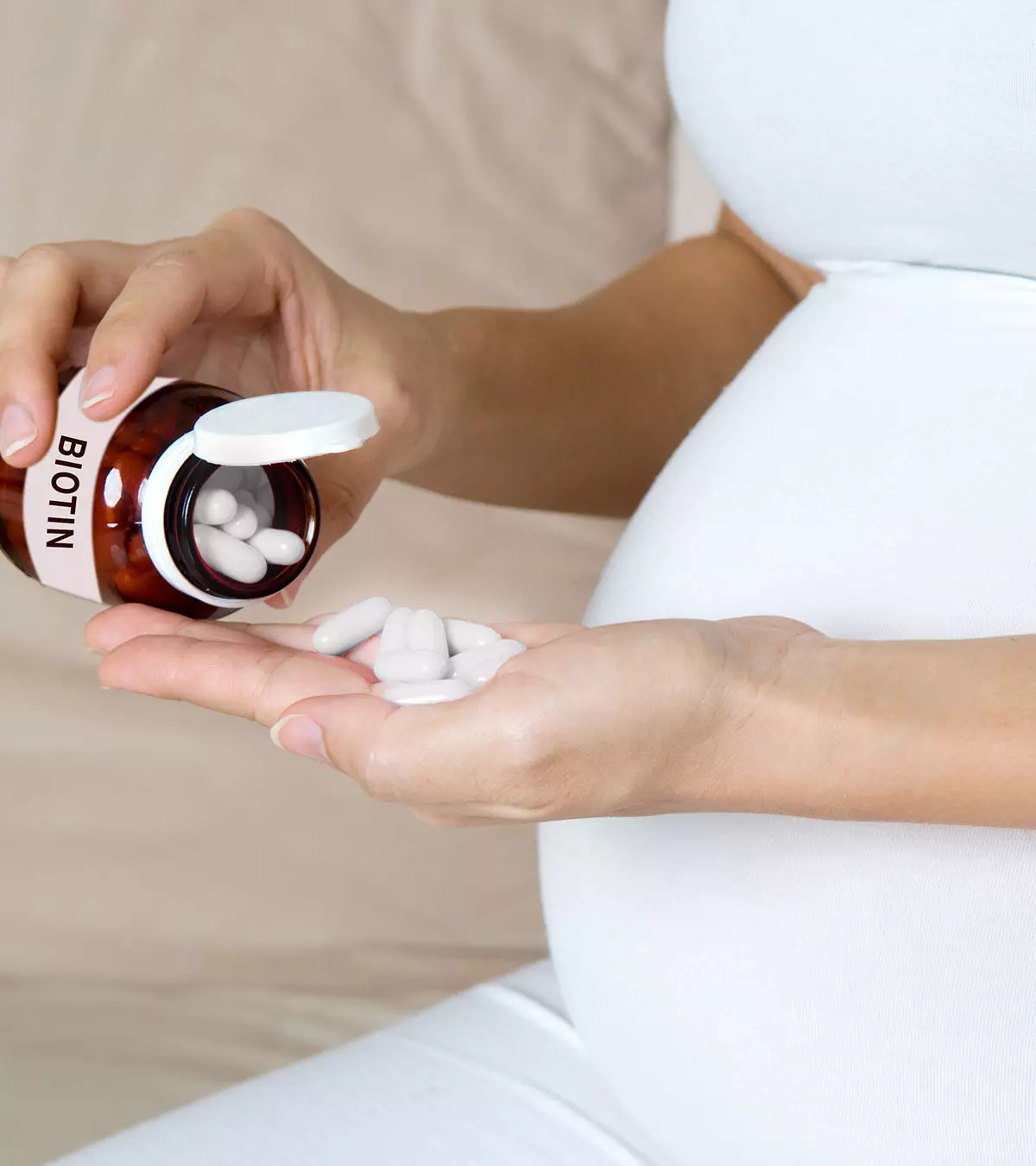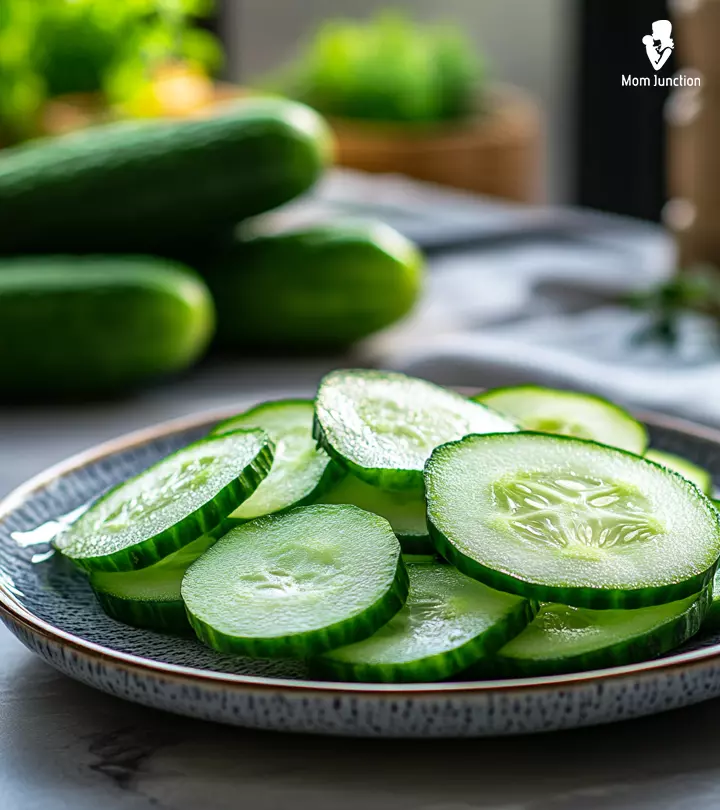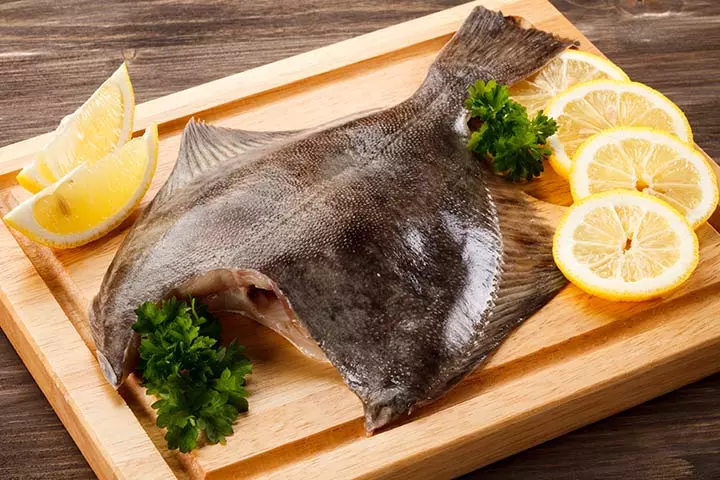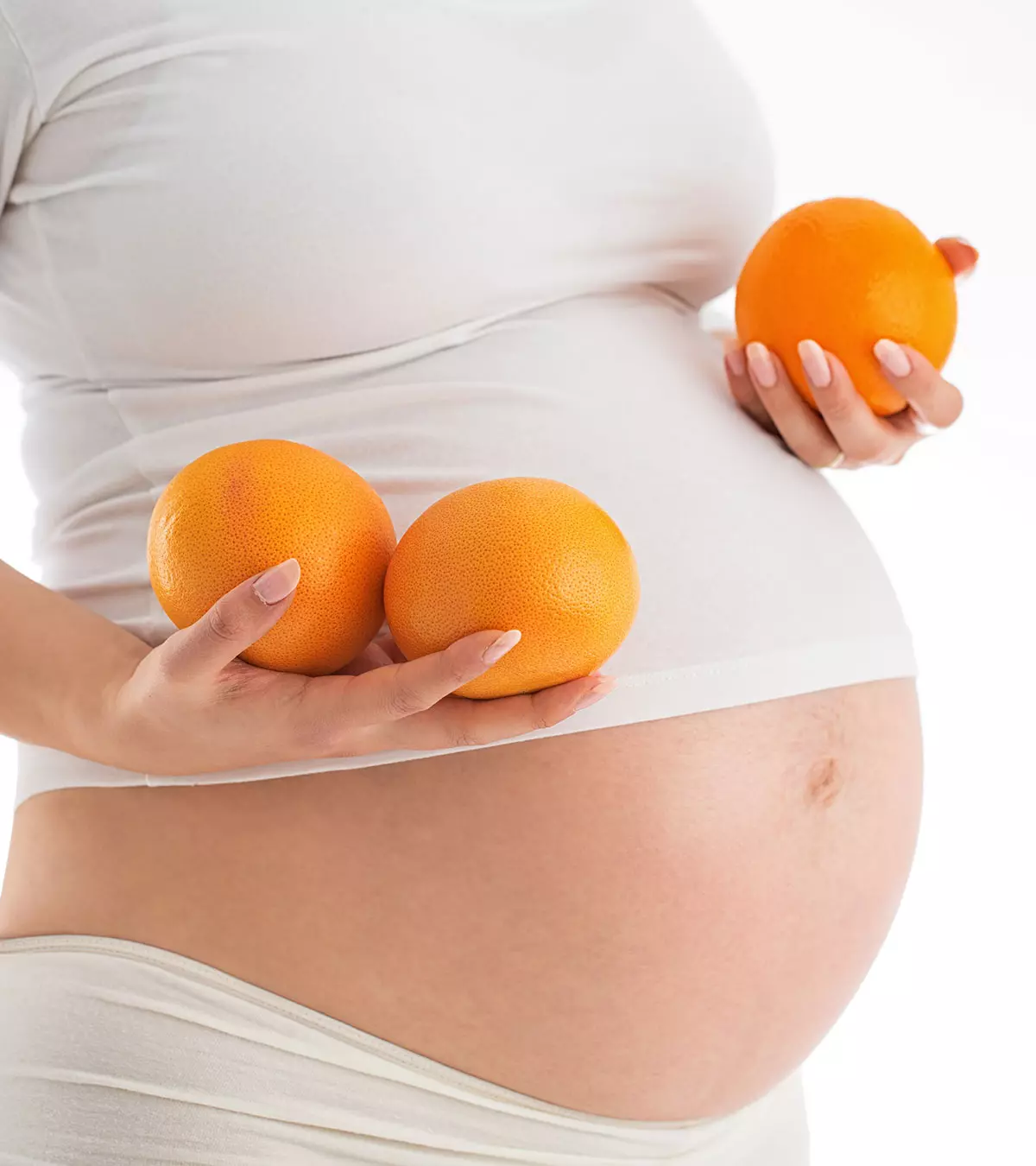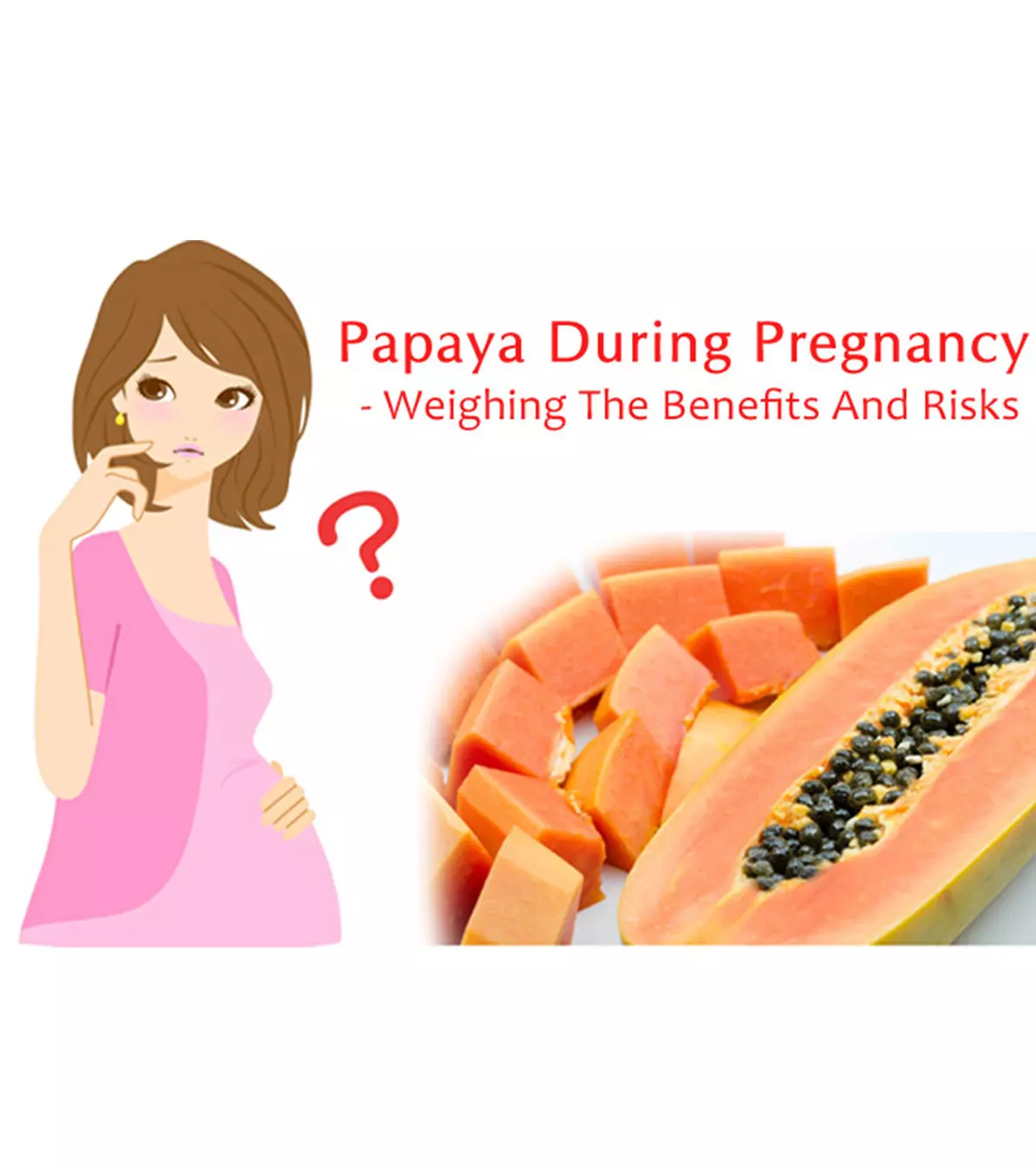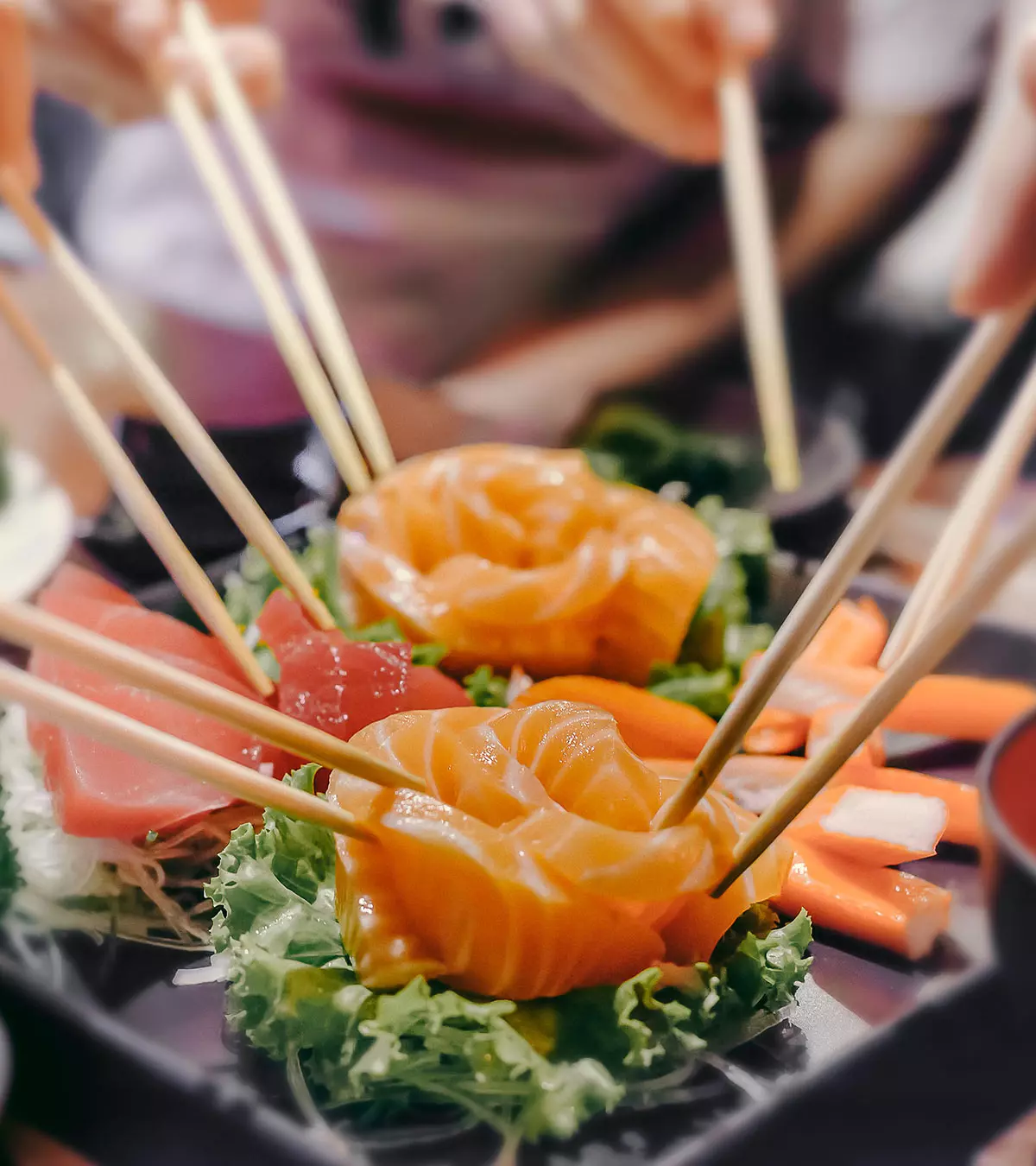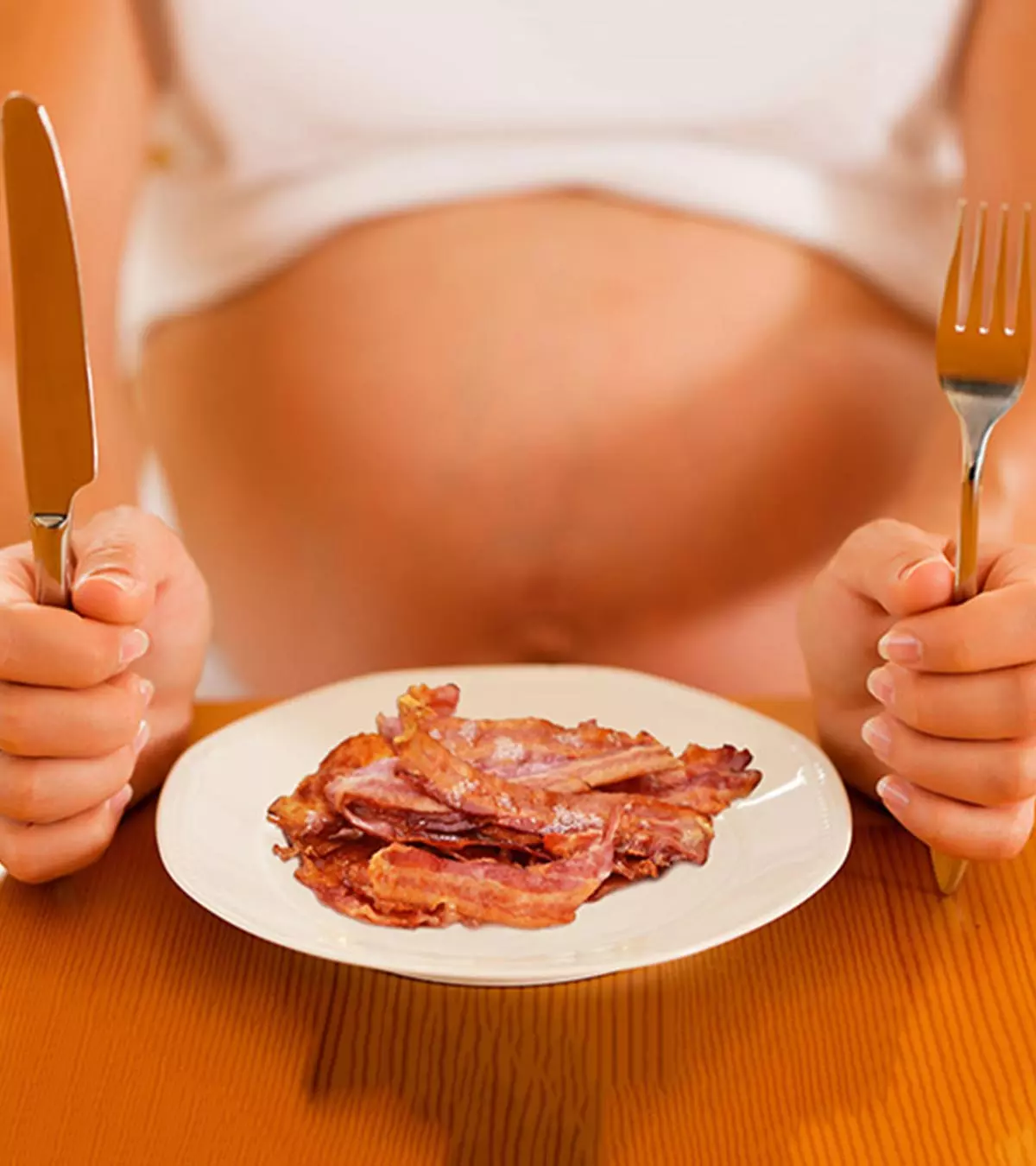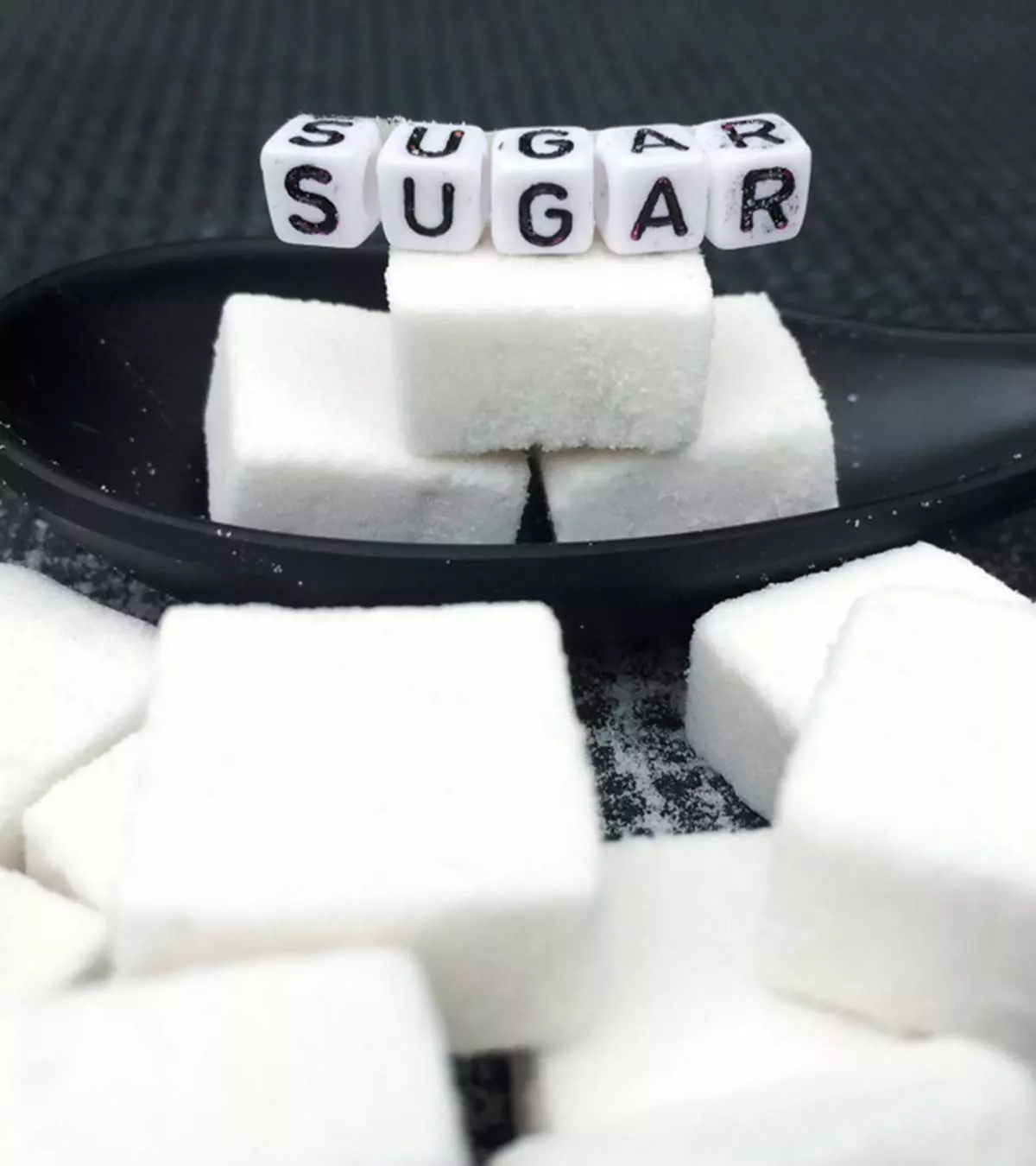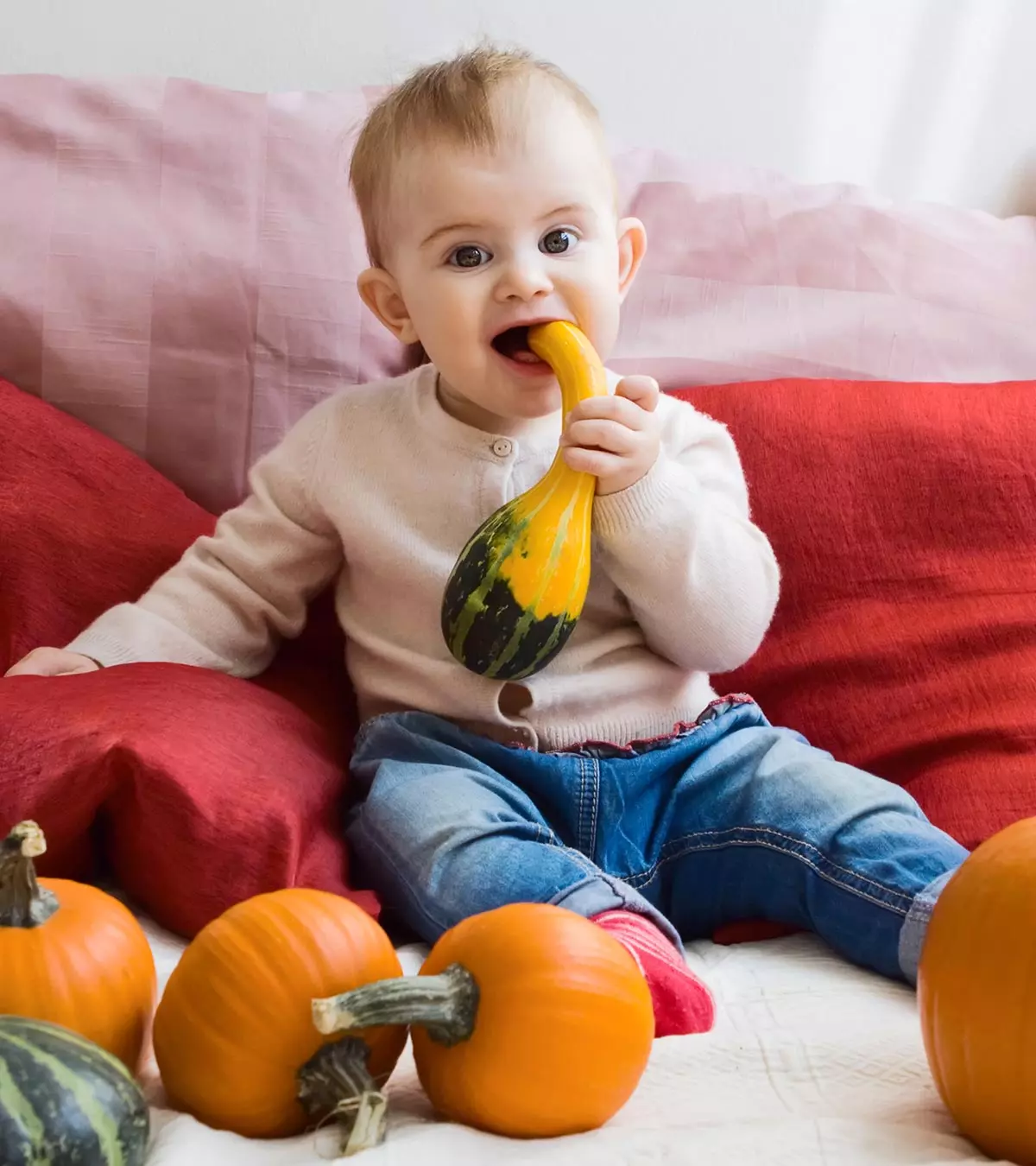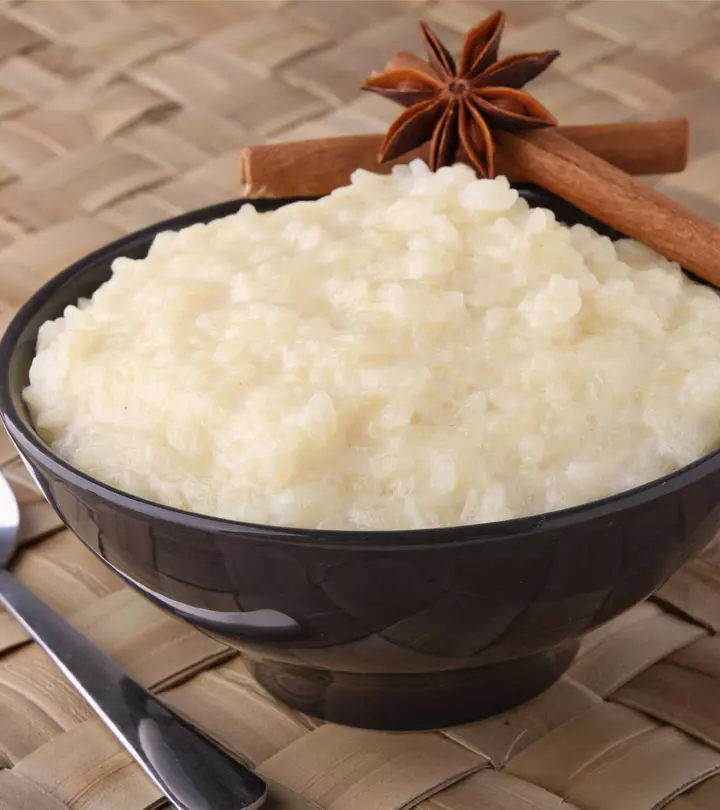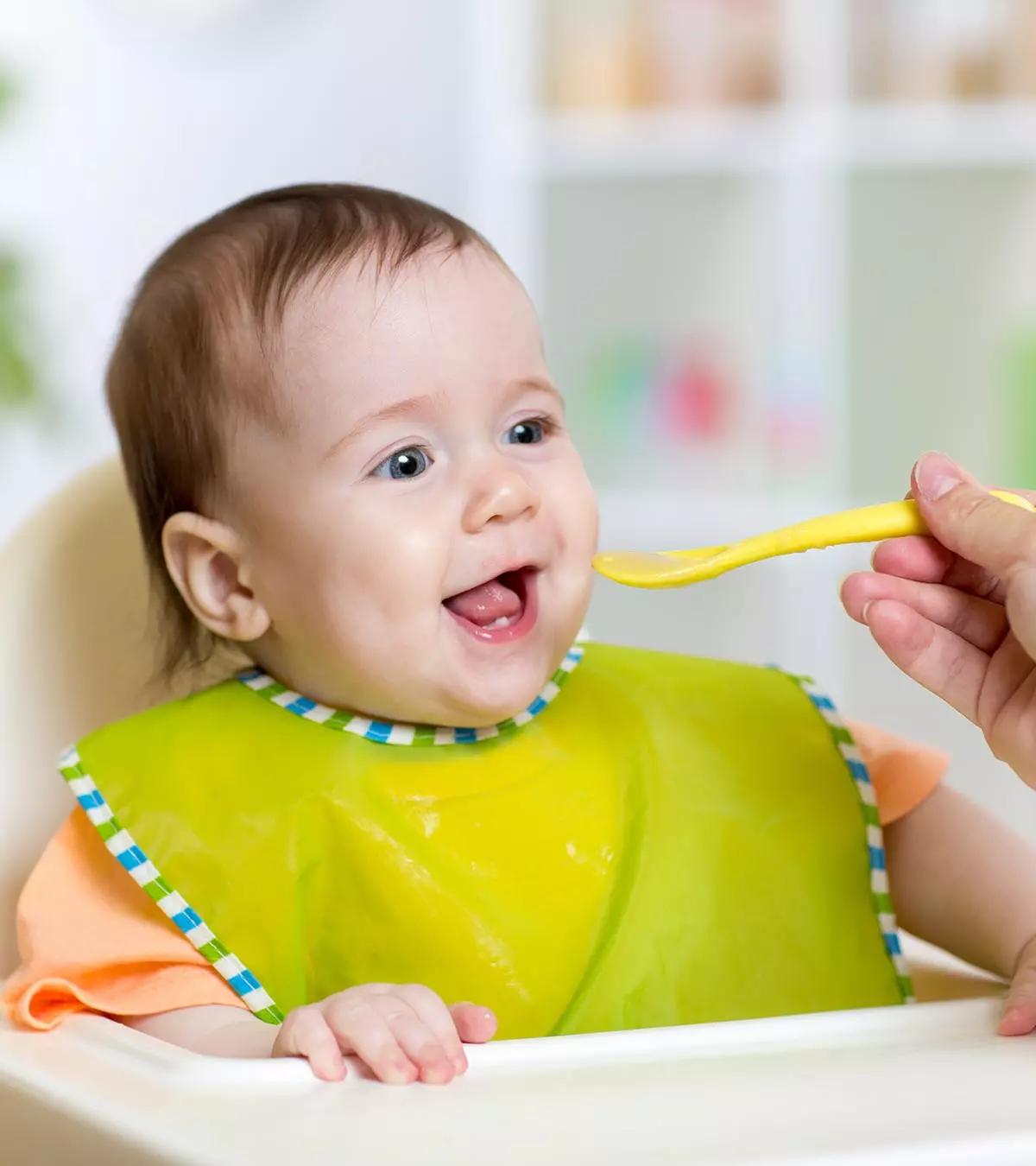
Image: Shutterstock
Rice cereal is usually the first choice of many parents when they start their babies on solids. In addition, many parents may consider brown rice for babies as their first choice of grain since it is allergen-free. While it is a choice of many adults, parents may want to know why brown rice is good for babies. Brown rice is considered one of the healthiest and most-studied types of rice. It is dense in fiber and nutrition, and therefore, brown rice cereal is the perfect first food for your baby. Read this post to know more about the benefits, nutritional facts, risks, and interesting brown rice recipes for babies.

Key Pointers
- Brown rice cereal is recommended as one of the ideal first foods for newborns due to its high nutritional value and allergen-free status.
- Brown rice is a good source of fiber, protein, and essential vitamins such as selenium and manganese.
- It is recommended to introduce solid foods, including brown rice, to babies when they are about six months old.
- It is advisable to introduce new foods one at a time to identify any specific allergies in infants.
- Parents are encouraged to choose organic brown rice and store it in a dry and cool place, and cook it well before feeding it to their babies.
When Should You Introduce Brown Rice To Babies?
Introducing brown rice to the baby when he begins eating solids or during the weaning process is advisable. The current recommendation to start solids for a baby is six months.
Nutrition Facts of Brown Rice
Babies need nutrient-rich food like brown rice to help maintain rapid growth and development cycles Below are the nutrition facts of brown rice as per the USDA National Nutrient Database (1).
| Serving size: 1/2 cup (100g) cooked long-grain brown rice |
|---|
| Amount Per Serving |
| Energy 123 Kcal |
| Total Fat 0.97 g |
| Saturated Fat 0 g |
| Trans Fat 0.26 g |
| Cholesterol 0 mg |
| Sodium 4 mg |
| Total Carbohydrate 25.6 g |
| Dietary Fiber 1.6 g |
| Sugars 0.24 g |
| Protein 2.74 g |
It is also a good source of selenium and a very good source of manganese.
A study by the Oldways Whole Grain Council used data from the USDA’s Nutrient Database to compare the nutrient composition of brown rice to white rice and enriched white rice. As depicted in the graph below, the results indicate that brown rice contains significantly higher amounts of all nutrients than white rice. However, enriched white rice had higher thiamine (vitamin B1), folate, and iron content than brown rice, possibly because the rice is enriched with these nutrients

Comparative nutrient analysis of brown rice, white rice, and enriched white rice
Source: Compare nutrients in various grains; Oldways Whole Grains CouncilBenefits Of Brown Rice For Babies
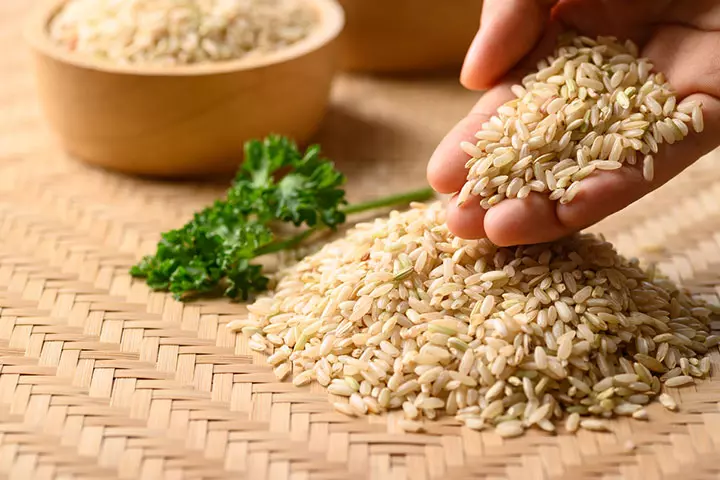
- Brown rice is versatile and is rarely allergic to babies.
- If your baby is suffering from constipation then fiber-rich brown rice can help as in loosening up the stool.
Risks Associated With Brown Rice Consumption
According to research, traces of arsenic may be present in brown rice. Consumer Reports’ food-safety experts believe those levels do carry a risk.
However, the US Rice Federation says, “Studies show that including white or brown rice in the diet provides measurable health benefits that outweigh the potential risks associated with exposure to trace levels of arsenic (2).”
When Do Babies Show Allergic Reactions To Brown Rice?
Babies may suffer allergic reactions if gluten or wheat is included in brown rice. Occasionally, even pure brown rice may cause allergic reactions. It is better to introduce new foods separately with a minimum gap of four days to identify possible food allergies or digestion problems in babies.
Why Choose Brown Rice Over White Rice For Your Baby?
If you are deciding between white and brown rice for your baby, there are several reasons why brown rice is better (3) (4).
- Unlike refined white rice that loses essential nutrients during processing, brown rice is a whole grain that retains fiber, vitamins, and minerals.
- Rich in important minerals such as selenium, magnesium, and folate, brown rice plays a crucial role in your baby’s growth and development.
- The fiber in brown rice supports digestion and helps maintain stable blood sugar levels — this is particularly beneficial for families with diabetes concerns.
Introducing brown rice in your baby’s diet not only ensures nutritious choices but also encourages their overall well-being and establishes healthy eating habits for the future.
How To Select And Store Brown Rice?
Select organic brown rice as it is free of pesticides.
Whole grains can be stored in a cool, dry place for several months. In case of high temperatures at home, store them in the refrigerator. Store milled whole grains in airtight containers, preferably in the refrigerator.
Uncooked brown rice can be stored for almost six months in covered pest-proof containers at room temperature. Refrigerating prolongs shelf life. Storing cooked brown rice can be tricky as it can harbor bacteria leading to food poisoning. It is advisable to cook freshly on the day of feeding for babies.
Points to remember while storing cooked brown rice:
- Do not store cooked brown rice at room temperature to avoid toxin formation.
- Cool freshly cooked rice and store in a covered container in the fridge below 8 degrees centigrade for later use.
- Reheat refrigerated rice until it is piping hot.
- Do not store cooked food for over two days and avoid reheating more than once.
The Best Way To Cook Brown Rice
- It is better to cook brown rice in a cooker. Cooked brown rice has to be made into a puree before serving the baby.
- To cook the brown rice powder, mix 1/4 cup of powder in one to two cups of water. Stir it as you cook to avoid lumps.
 Quick tip
Quick tip12 Healthy Brown Rice Recipes For Babies
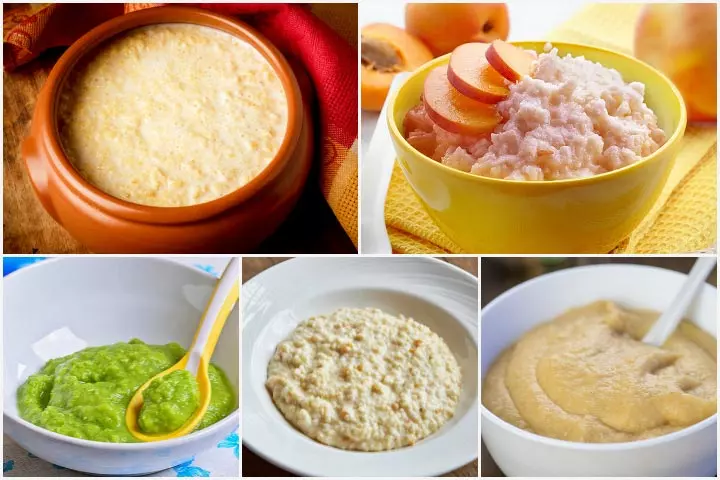
Here are some healthy brown rice recipes for babies.
1. Brown Rice Pudding Recipe

You Will Need:
- 2oz (1/4 cup) cooked brown rice
- 2 dried apricots
- 1/2 small, ripe banana
- 2 tbsp apple juice
- A tiny pinch of nutmeg
How To:
- Soak apricots in water at least for an hour so that they turn soft.
- Blend all the ingredients in a food blender until smooth.
- Add apple juice to adjust the texture.
 Quick tip
Quick tip2. Savory Baked Brown Rice
You Will Need:
- 8oz (1 cup) brown rice
- 1 stick of celery
- 12 fl oz (1 1/2 cups) homemade stock/broth or water
How To:
- Take rice in a skillet or frying pan and warm over medium heat, constantly stirring, until the rice turns golden brown.
- Chop the celery and saute.
- Take an oven-proof dish, add the celery, water or stock, and rice.
- Cover the dish and place it in an oven preheated to 350 deg F/180 deg C.
- Cook for 35 to 45 minutes, until the rice absorbs all the water.
- Blend it and serve after the rice gets down to a safe serving temperature.
3. Brown Rice Casserole With Tuna

You Will Need:
- 5oz (3/4 cup) brown rice
- 10 fl oz (1 1/4 cups) water
- 2oz (1/4 cup) natural yogurt
- 4 fl oz (1/2 cup) milk (breast milk/formula is preferred)
- A pinch of dried tarragon
- 4oz (1/2 cup) celery, chopped
- 6oz (3/4 cup) courgette/zucchini, diced
- 6oz (3/4 cup) tuna canned in water
- 4oz (1 cup) grated Cheddar
How To:
- Bring brown rice to boil.
- Cover the dish and simmer the heat for 35 minutes.
- Remove from the heat and mix milk, celery, tuna, tarragon, yogurt, and courgette/zucchini.
- Pour into a baking dish and bake for 30 mins at 350 deg F or 180 deg C.
- Add grated cheddar as the topping.
 Point to consider
Point to consider4. Banana Cado Brown Rice Mash
You Will Need:
- 1/2 banana mashed
- 1/2 avocado mashed
- 1/2 cup homemade brown rice cereal, cooked
- 2 tbsp applesauce
How To:
- Mix all the ingredients and mash them
- Serve warm.
- Refrigerate leftovers.
5. Brown Rice And Green Gram Porridge
You Will Need:
- 1 cup brown rice
- 1 cup green gram
- 200ml water
- A pinch of salt or 1/2tsp sugar
- 1/2 tsp ghee
How To:
- Roast brown rice and green gram separately.
- Powder once they get cooled down. Mix them to make brown rice-green gram porridge powder mix.
- Dilute two spoons of porridge powder mix in 200ml water and cook well.
- Add salt or sugar and ghee.
6. Peach And Brown Rice Breakfast
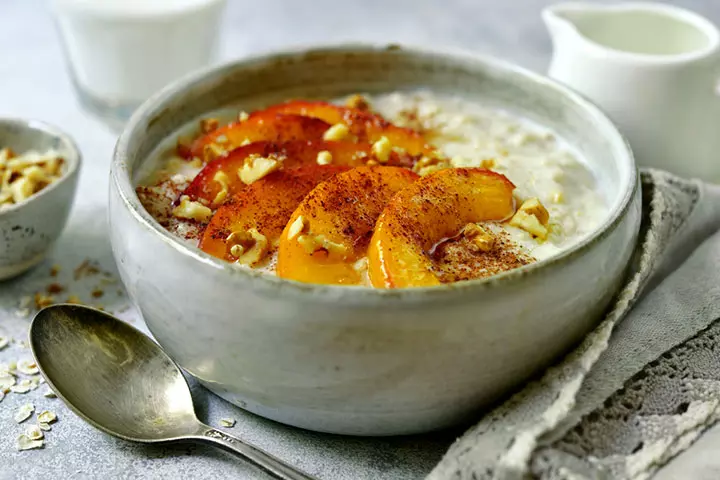
You Will Need:
- 1/2 ripe peach
- 2oz or ¼ cup brown rice
- 8 fl oz or 1 cup water
- Formula or breast milk
How To:
- Grind brown rice into flour, using a food processor.
- Peel off the pit from the peach and cut into little cubes.
- Stir in rice powder in boiling water. Simmer the heat and continue stirring.
- Add peach cubes and stir in.
- To adjust the texture, add a little formula or breast milk.
7. Apple And Pear Brown Rice
You Will Need:
- 4 fl oz or 1/2 cup apple juice
- 2 oz or 1/4 cup cooked brown rice paste
- 1oz or 1/8 cup raisins
- 1/2 small apple, peeled and chopped
- 1/2 small pear, peeled and chopped
How To:
- Put all the ingredients into a small saucepan and bring to a boil.
- Stir well, reduce heat and cover.
- Allow to cook on simmer for 30 minutes so that the apple juice gets absorbed completely.
- Take off the flame and serve warm.
8. Brown Rice And Fruit Pudding
You Will Need:
- 1 cup cooked brown rice paste
- 1/2 cup dry fruits
- 1/2 tsp nutmeg
- 1-2 tbsp maple syrup
- 1 tbsp butter
- 1 ripe banana, chopped
How To:
- Mix the ingredients in a pan.
- Turn on the flame and simmer-cook until the milk gets absorbed completely.
9. Simple Brown Rice Cereal
You Will Need:
- 1/4 cup brown rice powder
- 1 cup water
- Breast or formula milk
- 1tsp sugar
How To:
- Bring water to boil and add rice powder, stirring constantly.
- Keep stirring the mixture for 10 minutes at a simmer to avoid lumps.
- Add little breast milk or formula milk and sugar.
10. Brown Rice And Pumpkin Porridge

You Will Need:
- 1tbs brown rice
- 210gm seeded, skinned pumpkin
- 1 cup water
How To:
- Wash brown rice and soak in water for half an hour.
- Meanwhile, wash, cut, and peel the skin of the pumpkin.
- Steam the pumpkin pieces for 20 to 25 minutes.
- Add steamed pumpkin, rice and water into a blender to blend until smooth.
- Transfer the mixture into a small pot to boil on high flame for two minutes.
- Then simmer and constantly stir for five minutes.
- Sieve the boiled porridge and allow it to cool.
11. Brown Rice Congee
You Will Need:
- 3/4 cup short grain brown rice
- 8 cups water
- 1 cup diced apricots
- 1/4tsp salt
How To:
- Place fruit, rice, and water in a slow cooker.
- Cook for six to eight hours on low flame or four to five hours on high flame.
- Check and stir every one or two hours and add water if needed.
12. Brown Rice Khichdi
You Will Need:
- 2/3 cup rice
- 1/3 cup green gram or yellow pigeon pea
- 1tsp ghee
- 3 cups water
How To:
- Wash and soak rice in water for half an hour. Drain water.
- Add rice, green gram (or pigeon pea) and water in a pressure cooker and cook for three whistles.
- Add clarified butter (ghee) after the steam is released.
 Quick tip
Quick tipFrequently Asked Questions
1. Why is it good to introduce brown rice at an early age?
It is a good idea to introduce brown rice at an early age to make your baby accustomed to its flavor. Brown rice tastes nutty and different from white rice.
2. Why is brown rice better than white rice?
Brown rice is better than refined white rice as it retains most of its nutrients. It is produced by just removing the outermost layer of the germ called hull. But white rice is an outcome of further milling of brown rice, where the bran and germ layer are removed. Further polishing produces polished white rice. These processes make white rice lose many nutrients and health-supportive essential fats. Milling and polishing destroy 90% vitamin B6, 80% vitamin B1, 67% vitamin B3;and minerals such as 50% manganese, 50% phosphorus, 60% iron, 100% dietary fiber and essential fatty acids.
3. Will it take a longer time to cook brown rice than white rice?
Yes, it takes a longer time to cook brown rice than white rice. However, you may speed up the cooking time by soaking it overnight, and using the exact amount of water needed to cook it. Remember to use the soaked water for cooking the rice to avoid losing any nutrients.
4. Is brown rice syrup good for babies?
Brown rice syrup is used to sweeten some infant formulas and baby foods. Concerns regarding the usage were raised in 2012 when Dartmouth researchers identified that organic formula containing brown rice syrup had six times the safe limit set for arsenic (6). It is important to remember that baby’s everyday foods do not need sugar or other sweeteners.
5. Can I give brown rice milk to my baby?
Brown rice milk is usually unsweetened and does not contain any lactose or cholesterol. It can be given to babies on doctor’s advice, especially if the baby is intolerant to lactose or allergic to soy.
6. Is instant brown rice good for your baby?
Instant brown rice is made by partially cooking and dehydrating the grains. The process reduces nutritional value, taste and texture. It is advisable to use regular brown rice for babies.
7. Is fermented brown rice good for babies?
By using fermented grains, you can increase the digestibility and nutrient value. Follow these steps to ferment brown rice.
- Wash the grains well under running water to clear the debris.
- Put grains in a clean jar and add filtered water.
- Around 24 to 48 hours, the grains may get swollen.
- After 48 hours, drain, wash and cook. Store the remaining fermented brown rice in the fridge for future use.
8. Is brown basmati rice good for babies?
Basmati is long-grained, non-glutinous rice with the highest amino acid content and essential nutrients. Brown basmati retains its whole-grain nutritional value and is beneficial for growing babies.
9. Is it good to eat brown rice everyday?
If you are considering adding brown rice to your baby’s daily diet, choose brands grown in areas with minimal pollution, as some rice types may contain high levels of arsenic. Additionally, serve rice to your baby in moderation as part of a balanced diet that includes a variety of other food groups, such as fruits, vegetables, lean proteins, and healthy fats (7).
Brown rice is one of the healthiest and most considered forms of rice, as it is high in fiber and nutrients. It is also less likely to cause any allergic reactions. Brown rice cereal for babies can be considered as one of the first foods. You may try various other nutritious dishes from our list–brown rice pudding, casseroles, porridge, cereal, and khichdi. Choose only organic brown rice and keep it in a cool, dry place.
Infographic: Healthy Brown Rice Recipes For Babies
If your baby is six months or older, you may use this infographic for cooking healthy brown rice for them. Babies can be fussy eaters, so we have included delicious and quick recipes so your baby will relish their meal. So, go ahead and explore the menu!
Some thing wrong with infographic shortcode. please verify shortcode syntax
Illustration: Why Brown Rice Is Good For Babies

Image: Dall·E/MomJunction Design Team
References
- Rice brown long-grain cooked (Includes foods for USDA’s Food Distribution Program).
https://fdc.nal.usda.gov/fdc-app.html#/food-details/169704/nutrients - How much arsenic is in your rice?
https://www.consumerreports.org/cro/magazine/2015/01/how-much-arsenic-is-in-your-rice/index.htm - Is brown rice really better for you than white?
https://www.novanthealth.org/healthy-headlines/is-brown-rice-really-better-for-you-than-white - Rice and Nutrition: The Latest Research.
https://nutritionfacts.org/topics/rice/ - Mercury alert: Is canned tuna safe?
https://www.edf.org/health/mercury-alert-canned-tuna-safe - Organic Food Sweetener May Be a Hidden Source of Dietary Arsenic.
https://home.dartmouth.edu/news/2012/02/organic-food-sweetener-may-be-hidden-source-dietary-arsenic - Rice.
https://nutritionsource.hsph.harvard.edu/food-features/rice/
Community Experiences
Join the conversation and become a part of our nurturing community! Share your stories, experiences, and insights to connect with fellow parents.
Read full bio of Tracy Tredoux
Read full bio of Swati Patwal
Read full bio of Rohit Garoo
Read full bio of Anindita Ghatak







